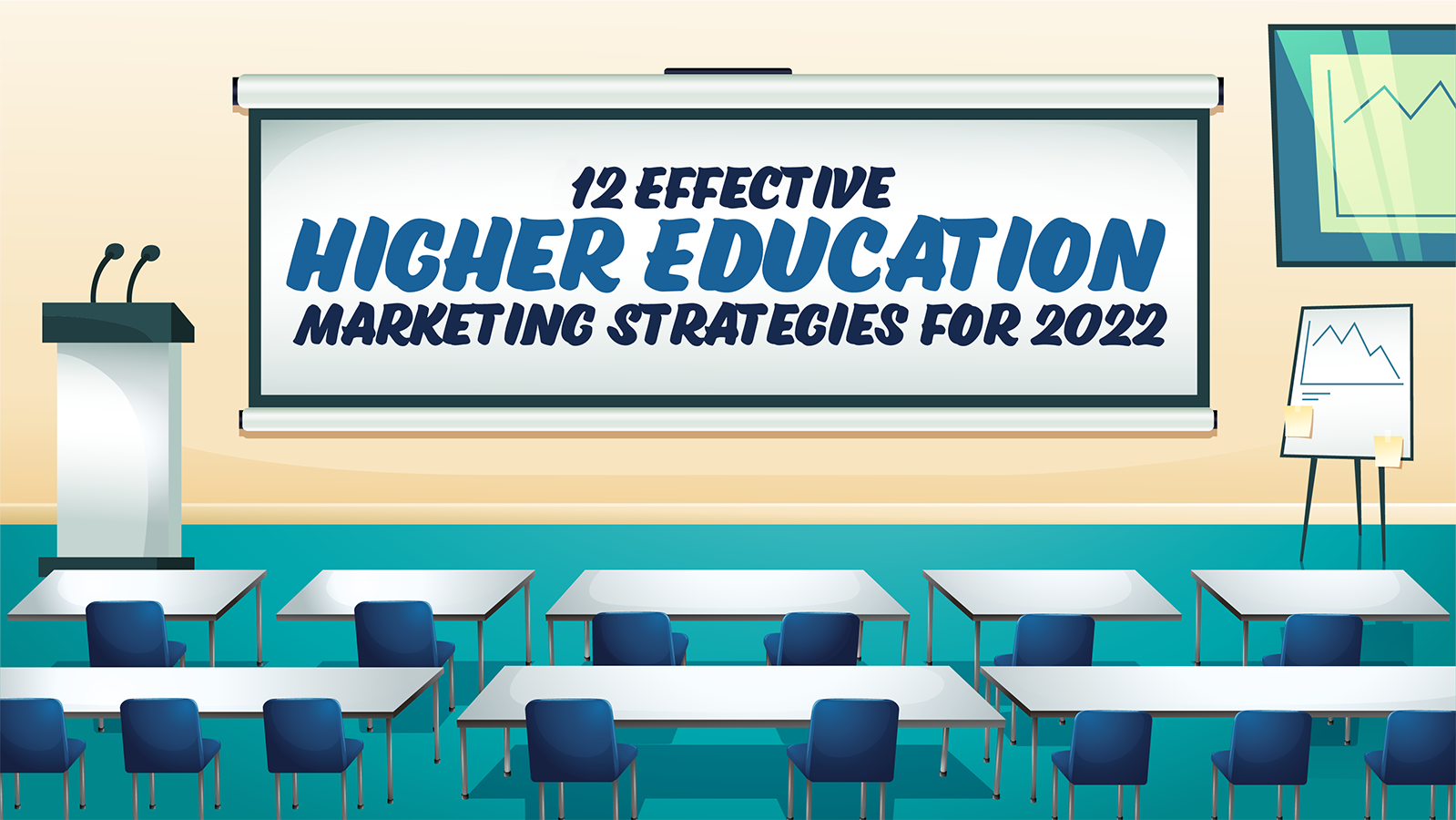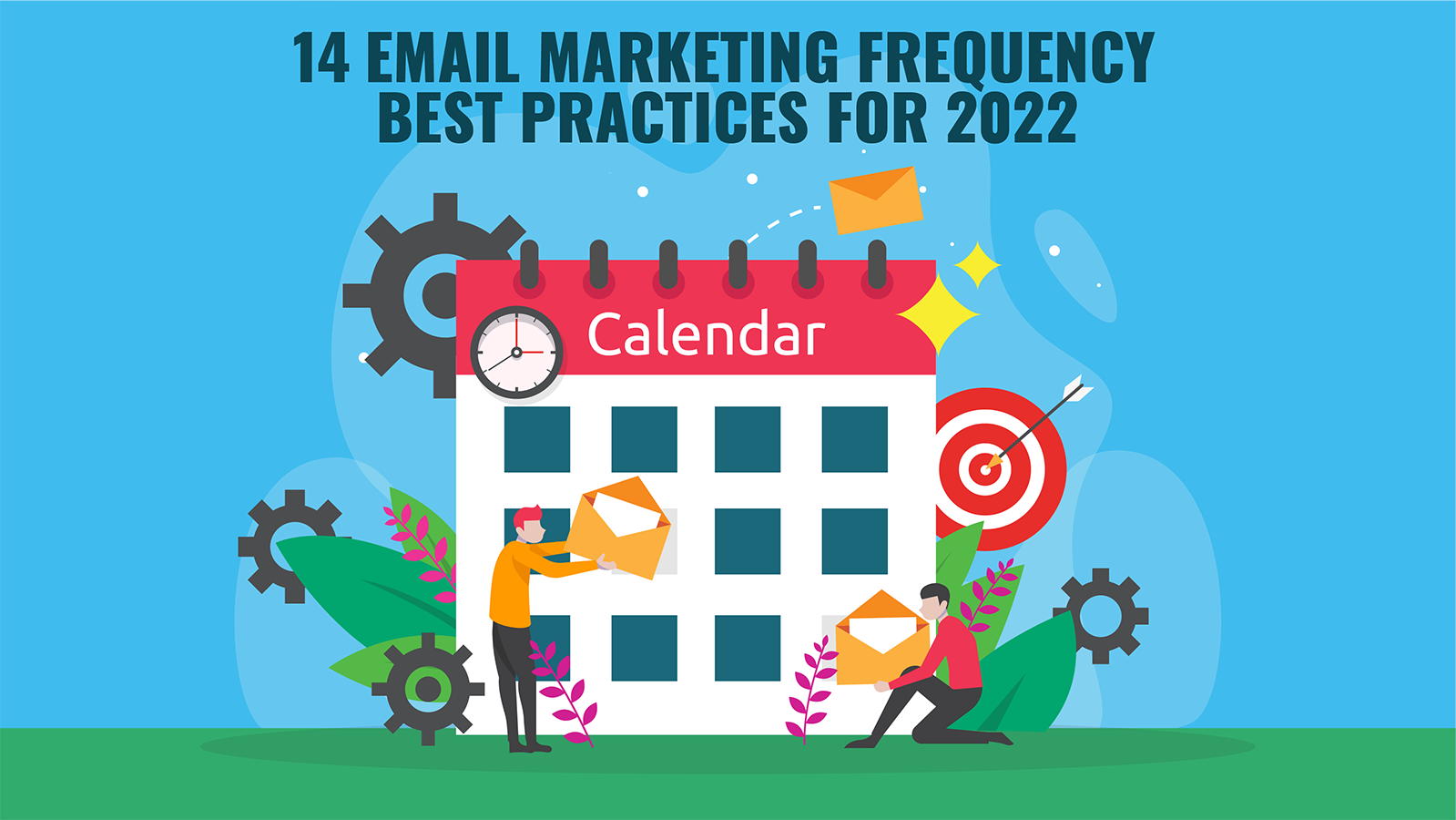With the pandemic, the downturn in undergraduate student enrollment at universities in the US and many countries worldwide is putting pressure on university marketers to deliver. In this environment, smart institutions are focusing on streamlining and improving their schools’ digital marketing strategy to make sure dollars are well spent.
If you are a university marketer looking to improve your program, these 12 new strategies for higher education marketing were written just for you.
1. Centralize Strategy and Reporting
A common challenge when working in higher education marketing is budgets are spread between departments and decentralized. In a recent webinar, University of Albany vice president Joe Brennan argued that being able to centralize marketing expenditures is key to running an efficient higher education marketing program.
This may not be feasible at all institutions, but standardizing KPI’s and creating a centralized place for measuring the effectiveness of marketing campaigns is a step in the right direction. We’ll talk more about ways to do this in the next section.
Without centralized reporting, it’s easy for different departments to fall into a pattern of using the same strategies year after year just because that's what they did the year before. Oftentimes, departments are resistant to change, and the only way to sell new tactics or branding is with data. Woodbury University found this when they redid their branding a few years ago.
Woodbury CMO Sharri Gibbons: "It takes concrete data to be able to sell that 'Look, this is working with younger students so let's go with it, rather than let's go with what we are used to.'"
2. Track the Right KPI’s
You can’t manage what you don’t measure. - Peter Drucker
While increased enrollment is your ultimate goal, if that’s all you measure, you won’t be able to see results fast enough to make adjustments. An effective college recruiting strategy should include tracking the following KPI’s:
Call-to-action conversion rates - Are visitors responding to your website? Filling out forms? Registering for events?
Traffic sources - Where are your website visitors coming from? Organic search? Email outreach? Social Trafic? Paid Search?
Social media engagement - Is your social media strategy working? Is your following growing and engaging?
Cost of Acquisition/Cost per applicant - The median cost for recruiting an undergrad student at a private four-year college was $2,357 in 2018 and $2,114 by 2020. How much are you spending on each channel and how many students did each campaign influence?
3. Use Marketing Automation
It’s not always easy to measure results on a granular level with traditional marketing. However, marketing automation has made it possible to track digital interactions with prospective students all the way from first web visit to enrollment.
After integrating HubSpot into their marketing program, National College of Ireland (NCI) saw an astounding 247% increase in leads over 12 months. NCI credits this increase in part to taking a persona-driven approach and tailoring their content to the main types of visitors that come to their website.
“I can now show our team how many visitors we get to the website, and how many of them convert into leads and become students,” says Emma at NCI.
Marketing automation can also be used outside of the digital realm. Many platforms allow marketers to track traditional marketing efforts like physical mail sent, events attended and interactions with recruiters. For example, Algonquin College was able to increase leads year over year by 71% by using Marketo to streamline their print and digital marketing strategies.
4. Optimize Your Email Program with AI
If your institution is cold emailing prospective students, there’s a good chance many are going directly to spam. 76% of students say they prefer to hear from colleges and universities via email over direct mail, but email deliverability can make it hard to reach students. Even though students have opted-in to receive email via the College Board doesn’t mean your emails won’t go to spam.
Using a tool to throttle outbound emails is one way to improve deliverability when sending bulk email. In addition, doing everything you can to optimize email engagement will make sure your sender reputation stays high and your emails continue to be delivered.
A few ways you can optimize your engagement include:
A/B testing messaging/subject lines - A/B testing is the only way to isolate message content from other variables like list quality or send time. Try to regularly split test your subject lines and content to see what performs best.
Personalizing content - Sending personalized, segmented relevant emails is one of the best ways you can increase your engagement and improve overall deliverability. - We’ll touch more on this later.
Optimizing your timing with AI - Tools like Seventh Sense use machine learning to identify the best time to email each person who’s interacted with your email in the past. Sending an email with personalized delivery times can increase engagement by between 15-30%. In addition, Seventh Sense can help you identify which people on your list are losing interest and are unlikely to engage with your messages. This way you can save your sender reputation by only emailing those people who are likely to engage.
5. Improve SEO
A surprising research result shows that 64% of prospective college students prefer text and articles on college sites. For better organic search results and rankings, colleges and universities must know which keywords to incorporate into web content.
Understand your audience and use the language they are using. Use long-tail keywords to increase your search rankings. Carefully think about key questions that prospective students will ask and answer them in high-quality content blogs and web pages. For example, target key search phrases like, “what's it like to live in Florida as a student” or “where are the best places in Florida as a student.”
6. Build a Digital-Friendly Brand
Branding has always been an important part of higher education marketing, but many colleges and universities are now finding they need to update their branding to work on digital devices. For example, Imperial College Business School was able to drive up student applications using a new visual identity taking a “digital-first” approach.
“In our work for Imperial College Business School, we took a digital-first approach to the brand identity. Colours were chosen to work on screen. We developed a simple visual language that could perform seamlessly across multiple platforms, from website icons to video animation.”
Woodbury University increased page visitors by 4000% with a combination of a new brand platform, coordinated social media campaign, and highly targeted marketing. Their campaign showed that the muted colors they had been using did not perform well with millennials.
From MarketingSherpa: "We have design professionals on our faculty who are … very, very opinionated," Gibbons said. An example of this, she said, was how the architecture team really liked muted colors. "But digital natives, the young ones under 21 and the young Millennials were by and large always responding to these very bright, multi-color setups."
Finally, remember that to stand up over time, a higher education brand has to be associated with consistent quality education and alumni success. Showcase the quality of your university using statements backed with data and facts. Numbers showing a high number of applications, quality of professors, placement of graduates - all help to build a strong brand.
7. Live Streaming
Another emerging digital marketing strategy for higher education is the use of live streams. Instagram Stories, Youtube Live, Twitch Stream, and TikTok Live are the big players in this arena.
A few ways you could use live streaming include live stream Q&A sessions, taking people behind the scenes, live streaming events like sports, and even live streaming classes. Live streams are viewed as “more authentic” by many teens and can be a great way to build relationships with potential students.
8. Personalize Communication
Online education provider Stafford Global was able to increase web leads by 50% using HubSpot. By personalizing and optimizing their communication strategy using workflows, they were able to shorten their conversion time by 58%.
From Stafford: “For example, prospects from the US and Canada prefer to get text messages and emails before we contact them by phone. However, prospects from the Middle East and Africa would rather receive a phone call first. With Workflows, we can make sure that everyone gets their optimal experience.”
Creating detailed email workflows based on your different types of student persona is another way you can use marketing automation. People seek higher education for different reasons. Some are coming straight from high school while others are changing careers.
Consider segmenting your audience to better address their individual needs. Parthenon Group breaks university students into six segments:
- Aspiring academics - “traditional students” mostly 18-to-24-year-olds with impressive academic profiles.
- Coming of age - these are mostly in the same age group but they are yet to decide on what to focus on.
- Career starters - still in the same age group but these are more career-oriented and are using college as a springboard for their future careers.
- Career accelerators - these prospects are older, already working but looking to advance in their field of work. They are most likely to avail of online courses among all segments.
- Industry switchers - probably in the same age group as career accelerators but are looking to switch fields possibly due to lack of opportunities and growth in the present one.
- Academic wanderers - these are those getting into college later in life, who don’t really have a specific path in mind, but do believe that a degree will open up doors for them. Most likely to be unemployed and have lower income.
By understanding what types of students your university is attracting, you can better target your marketing to address their concerns.
9. Higher Education Marketing on Social Media
Seven out of ten Americans use social media, but among 18-29-year-olds, that number jumps to 84%! Did you know Harvard has 1,145,727 Twitter followers? You’d be foolish to ignore social channels in your higher education marketing when your primary market is generation Z. Let’s look at a few strategies you can use to maximize your social media efforts.
Feature successful alumni - Ultimately, higher education is an investment. Research shows prospective students put a lot of weight on an institution’s post-graduation alumni employment track record. Showcasing alumni successes on your social channels is both a great way to support and stay in touch with alumni, and to attract new students.
Feature student and faculty achievements - Are your professors and students doing groundbreaking research or innovative work? Show it off! Many campuses are siloed and marketing is not in touch enough with department faculty to be aware of the great work happening on campus. Academics are notoriously bad at interacting with the public, but marketers are experts. Leverage your strengths so campus marketing can help faculty, students get the recognition they deserve.
Feature your beautiful campus - Do you have an attractive campus? Showcase it on social media. Many students say that campus environment is an important part of the decision-making process.
Showcase your social life - College is an experience and many people say the friends they make in college are defining for the rest of their lives. Showcasing student activities is a great way to help students envision a bright and social future at your school.
Build a social media directory - You might want to follow NYU’s example where they have a directory exclusively for NYU social media accounts of each of their departments. Many students want to see what their specific department is up to!
Create Facebook interest groups - Another social media strategy you can try is to create interest-based Facebook groups. Ideas for groups include: groups for alumni per class year, or per club membership, and even a group for parents, as Princeton does.
Use social media ambassadors - Using students as “social media ambassadors” is another new strategy many universities are using to increase their reach on social channels. Flagler College has a YouTube channel that features student ambassadors creating fresh content, doing takeovers, vlogs, and acting as “influencers” for the school.
Use short-form videos - Millennials and Gen Z’s are the main audience of short-form content, look no further than TikTok. There are 689 million active TikTok users and 62% of TikTok users in the US are aged between 10 and 29 and more than 40% are aged 16-24. TikTok is a great place to showcase campus culture and experience like University of Florida. Do not underestimate the influence of this entertaining, fast-paced, and bite-sized video format -- never neglect it.
Dedicated hashtags - Gartner found that 84% of millennials say they are influenced by user-generated content. By creating dedicated hashtags, your university can take advantage of social proof to build your university’s social media brand. Consider creating and promoting hashtags for events and departments as well.
Showcase your values and cause - Refuels Gen Z Explorer Series found that Gen Z are socially conscious and motivated by causes. By showing that you care and support the causes they believe in presents you as authentic and accessible – just don’t go too overboard.
10. Personalized Mobile-Friendly Website
More than ever, a university’s website is its primarily calling card. Most students start their search for schools online and your website is probably the first time they will come in contact with your brand.
Be data-driven in your approach as you design your website and make sure you have people on your team that are familiar with effective UX design. Now is not the time to be cheap. With the pivotal role university websites play in student research, you’ll want to make sure your website is effective and optimized for conversions.
It’s well known that millennials like their phones, but did you know that 1 out of 5 millennials use ONLY mobile devices to access the Internet? Add to that the 95% of Gen Z now ownes a smartphone with 78% of them consider it as their go-to device.. Having a non-responsive or non-mobile friendly website is not an option in 2022. Make sure your website performs well on both desktop, mobile and tablets.
Build your content with your persona’s in mind and consider using web personalization. Web personalize will allow you to optimize conversions for students who have expressed an interest in particular programs at your school by featuring content from those programs.
11. Chat Bots for Higher Education Marketing
60% of students expect a response from a college representative within the same day after filling out a form. To make sure students are responded to quickly, some universities are using web chat. By implementing chat, or “conversation marketing” college representatives are able to reply to questions immediately.
Chat platforms like Drift allow you to respond to student inquiries instantly by automating the first steps in a conversation before escalating the conversation to a real person. Drift found your chance of contact decreases 10x after just five minutes without a response, so automating responses is critical if you aren’t going to have people standing by for live chat all the time.
When implemented effectively, this “fast lane” can dramatically speed up conversations with students.
12. Don’t Forget Visuals and Aesthetics
In the age of visual content competition, beautiful aesthetics and design is a must if you want to succeed in the competition. With Gen Z growing up immersed in technology and social media, they are true digital natives. Gen Z are next in line for higher education and they live and breathe the digital world and digital intuition comes easy to them.
Gen Z’s are obsessed with visuals and aesthetics, more so than any other generation. They prefer beautiful design and elements that go well with each other. There are different types of aesthetics -- the Y2K, dark academia, cottagecore, and e-girl/boy are some of the more popular ones.
If you want to catch their attention and connect with them, don’t forget to apply on-brand good design to your marketing strategy.
Implementing Your New Higher Education Marketing Strategy
Marketing shouldn’t just be executing the same strategy year after year, but actively coordinating with the rest of the school administration to plan and execute a marketing strategy that fits the university’s goals as a whole.
It’s up to you to define what success looks like for your team. It’s time to make a plan, and put these 12 new strategies for higher education marketing to work.






